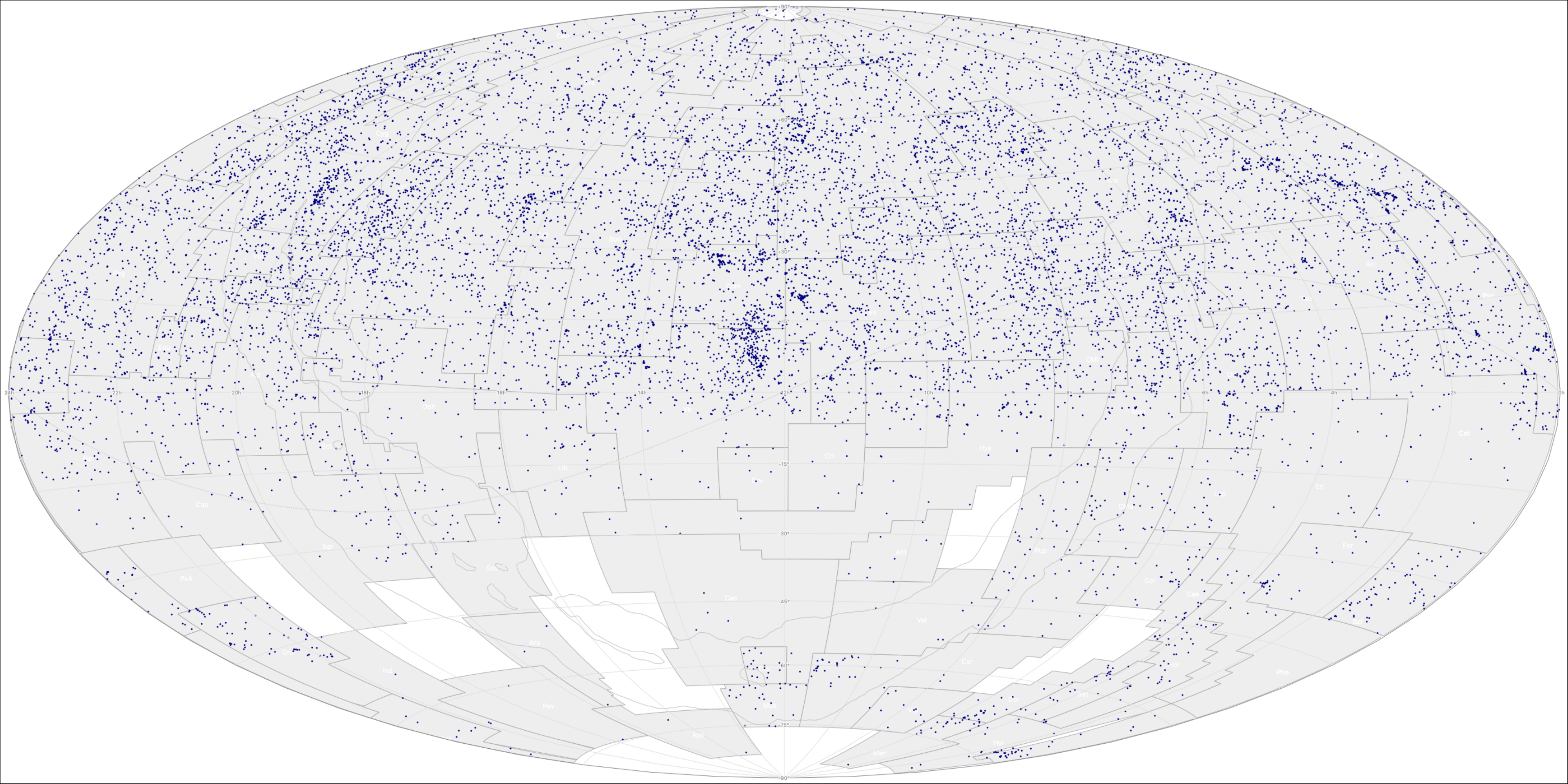SQM is nothing. Transparency is everything.
The table to the right lists my total number of recorded observations and the total number of unique objects observed.
Open clusters involved in a nebula and galaxy pairs or groups are counted as single objects. Double stars are logged only when at least one component was observed other than the primary.
The image below the table depicts the positions of objects for which I have logged at least one observation.
Observations
The table below can be searched to find observations for specific objects, or filtered by object categories, constellations, observing sites, etc. It's a large table: please allow it to load for about 20 seconds before performing a search.
Click the date & time of the observation for the corresponding observing session. Click an object's coordinate to view it in Aladin. For double stars, the WDS designation takes you to Stelledoppie. Other links are provided for object categories, the constellation in which an object is located, telescope / eyepiece / filter combinations used for the observation and the observing site.
| Observations | Unique objects | ||
|---|---|---|---|
| Open clusters | 1146 | 654 | |
| Globular clusters | 278 | 131 | |
| Nebulae | 278 | 165 | |
| Dark nebulae | 16 | 13 | |
| Planetary nebulae | 453 | 194 | |
| Supernova remnants | 59 | 29 | |
| Galaxies & galaxy groups | 6413 | 5232 | |
| Other | 76 | 59 | |
| Deepsky objects | 8719 | 6477 | |
| Asterisms | 81 | 74 | |
| Carbon stars | 1382 | 465 | |
| Double stars | 7429 | 5694 | |
| Total | 17611 | 12710 | |
| Observing sessions: 315 | |||
| updated: 17 September 2025 | |||
Observations can also be viewed in a full page table, for individual years and sessions and separately for carbon stars, open clusters, globular clusters, nebulae, planetary nebulae, supernova remnants, galaxies & double stars.
I log my observations in my native language Dutch and translate them to English. Translating older observations (spring 2015 to autumn 2013 and summer 2010 & earlier) is a work in progress.
Rating Observations
I rate my deepsky observations on a scale of 1 to 10:
- At the limit of visibility, often only visible with use of averted vision, no detail discernible;
- Easier to observe but no noteworthy detail visible. For example, a small, faint galaxy that is brighter in the middle but lacks a visible nucleus;
- Easily observed, some detail is visible, but nothing special. For example, a small galaxy with a visible nucleus;
- Worth the effort. Quite bright and/or some detail is visible. Worth observing again in a future session.
- Nice, above average, can be faint and is definitely not a showpiece but some detail may be visible, such as subtle structure in a galaxy;
- Pretty! An object to observe frequently. More detail may be visible, such as a hint of an arm of a galaxy or a dark lane;
- This is where real beauty starts. Often bright and/or large with lots of detail. An object that justifies calling someone over to your telescope to come take a look;
- When objects become showpieces, objects with a "wow-factor";
- Truly beautiful, spectacular! But not...;
- Omega Centauri, Messier 42, Eta Carinae, etc. Although there is of course variation in the appreciation of these objects, there comes a point when the rating is simply a 10.
My ratings for double stars are similar, although I only rate doubles that I believe are worth observing again. My minimum rating for double stars is therefor a 4.
Observing Log
click here to open the observations table in a full page
click here for individual observing sessions

